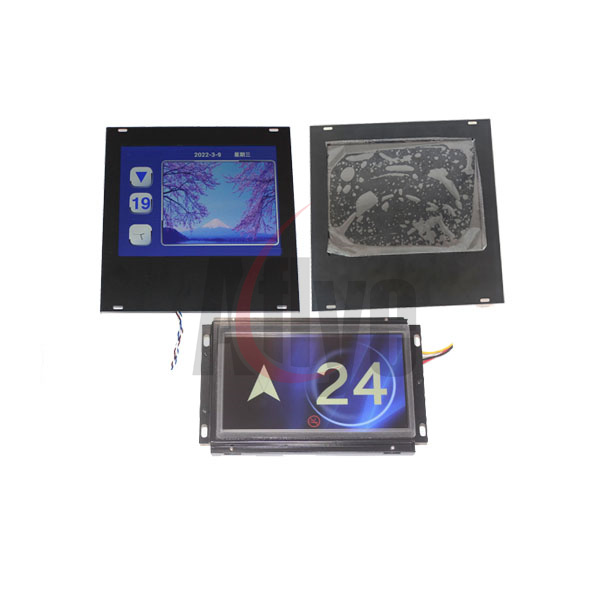What is an Elevator Display Screen?
Elevator display screen, also known as an elevator monitor, which is widely used in various locations where elevators are installed with remote monitoring capabilities. Without altering the original electrical circuits of the elevator, it uses optical sensors to sample the elevator’s operating status. It can overlay and display information such as time, date, elevator brand, floor number, direction of movement, operating status, and even fault information (e.g., door jam) on remote elevator monitoring video feeds.

Types of Elevator Display Screens
Elevator display screens come in a variety of types, including:
- Elevator Cabin Display Screen: Installed inside the elevator cabin, this screen displays the operating status and floor information of the elevator. Common types include elevator LCD screen and elevator touch screen. For example, some cabin displays show the elevator’s direction of movement, current floor, and destination floor, providing passengers with visual feedback.
- Elevator Electronic Display Screen: Typically used in public elevators, these screens can display advertisements and may be installed in a freestanding or wall-mounted format. Sizes vary, from small screens to large advertising panels, to meet different installation and usage needs.
- Control Panel LCD Display Screen: Primarily used to display control information, such as floor selection and door controls. These are usually installed on the inside or outside of the elevator, making it convenient for users to operate.
- Elevator-Specific LCD Screen: These LCD screens are specifically designed for elevators and can display the operating status and fault information of the elevator. Some of them also support touch operations, providing a more convenient user experience.
- Elevator Floor Display Screen: Also known as an elevator monitoring floor display or elevator floor signal overlay, this screen is used in monitoring systems. It uses optical sensors to sample the elevator’s operating status and can overlay and display information such as time, date, elevator name, floor number, direction of movement, and operational status on remote elevator monitoring video feeds. This improves management efficiency and safety.
These display screens not only enhance the convenience and safety of using elevators but also integrate advanced electronic technologies, such as touchscreen functionality and intelligent ad display features. This adds a modern touch and improves user experience. Additionally, some screens support remote monitoring. At the same time, it also facilitates the monitoring and maintenance of lifts by the administrators and guarantees the normal operation and management.

